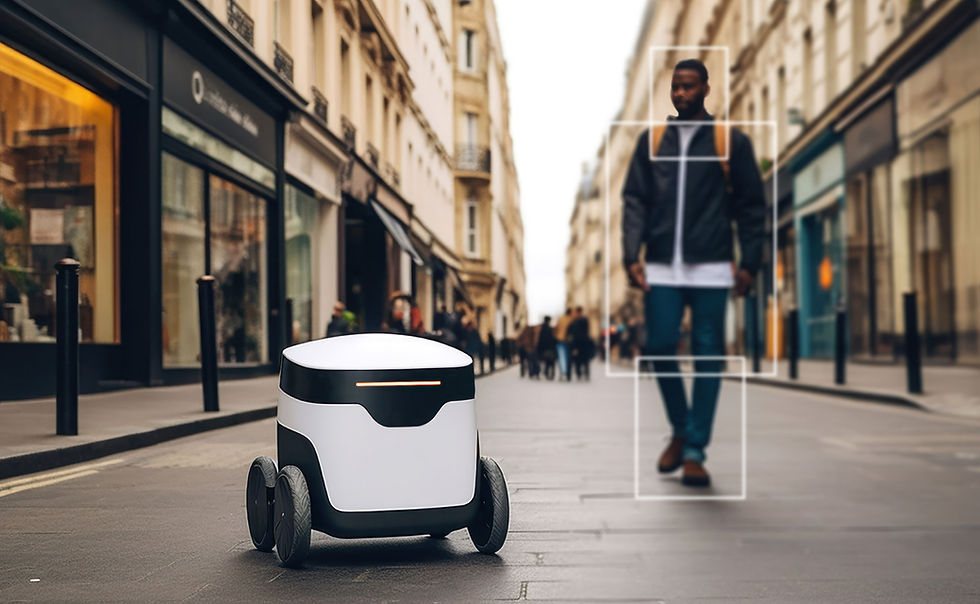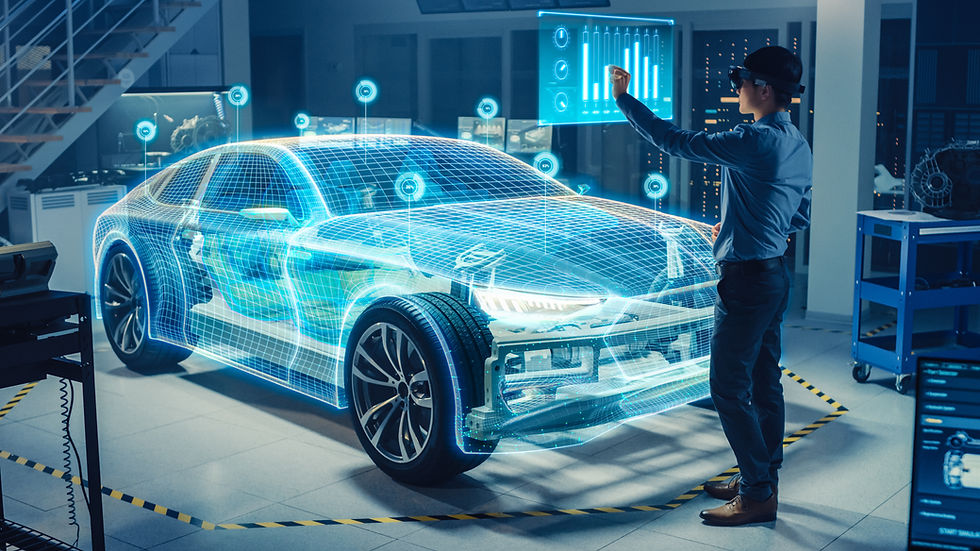Ensuring Compliance: Generative AI in Regulatory Testing of Vehicles
- Shreshth Virmani
- Aug 24, 2023
- 4 min read

In the ever-evolving landscape of the automotive industry, the pursuit of regulatory compliance and safety standards remains paramount. However, a technological revolution is underway, poised to transform the way vehicles are tested and validated to meet stringent regulations. At the heart of this transformation lies Generative Artificial Intelligence (AI), a powerful tool that is reshaping the landscape of automotive compliance testing. This article embarks on an enlightening journey through the intricate world of regulatory standards, unveiling how the fusion of cutting-edge technology and simulation prowess is redefining the way we ensure safety, quality, and adherence to regulations in the automotive sector. From simulation-based testing to automated documentation, Generative AI is paving the way for a future where automotive compliance is not just met but exceeded with remarkable efficiency and precision.
Introduction: Generative AI's Influence on Regulatory Compliance
The automotive industry operates in an environment where adherence to regulatory standards and safety norms is of paramount importance. As regulations evolve, manufacturers are challenged to ensure their vehicles meet these standards while pushing the boundaries of innovation. This is where Generative AI enters the scene as a formidable ally. Generative AI represents the confluence of advanced technology and forward-thinking strategies that collaborates with engineers, safety experts, and regulatory bodies to orchestrate a paradigm shift in compliance testing methodologies. Through advanced simulations and data-driven insights, Generative AI brings unprecedented efficiency and precision to the validation process.
Simulation-Based Compliance Testing: Pioneering Virtual Validation
One of the most transformative aspects of Generative AI in regulatory compliance testing is its ability to pioneer virtual validation through simulation. Traditionally, compliance testing required physically conducting tests on prototypes, consuming time, resources, and in some cases, multiple iterations. Generative AI changes the game by creating highly complex and accurate virtual simulations that replicate real-world scenarios. These simulations enable engineers to comprehensively evaluate a vehicle's performance under various conditions, ensuring that it meets regulatory requirements in a controlled and repeatable environment. This not only accelerates the testing process but also minimizes the need for physical prototypes, resulting in cost savings and more efficient development cycles.
Crash Testing Scenarios Generation: Predicting Safety Outcomes
Safety is the cornerstone of automotive compliance, especially when it comes to crash testing. Generative AI takes a proactive stance by analyzing historical crash data, vehicle dynamics, and other critical parameters to generate a diverse range of crash scenarios. These scenarios allow engineers to predict potential safety outcomes, assess structural integrity, and refine vehicle designs accordingly. By harnessing the power of Generative AI, manufacturers gain insights that enable them to enhance occupant protection, minimize injury risks, and design vehicles that excel in safety tests.
Regulatory Documentation Automation: Streamlining Compliance
In the world of regulatory compliance, accurate and timely documentation is essential. Generative AI steps in to automate this critical aspect of compliance. By processing vast amounts of compliance-related data, AI-powered systems can generate regulatory documents seamlessly. This includes reports, certifications, and other documentation required by regulatory bodies. The automation of documentation not only ensures accuracy but also accelerates the reporting process, enabling manufacturers to meet regulatory requirements efficiently and without the risk of human errors.
Quality Assurance Enhancement: Elevating Safety and Performance
Beyond meeting regulations, Generative AI enhances overall quality assurance. By analyzing simulation outcomes and crash data, AI identifies potential safety vulnerabilities, design shortcomings, and areas for improvement. This enables manufacturers to fine-tune their vehicle designs, optimize structural integrity, and enhance overall performance. Through Generative AI, vehicles are not only designed to pass compliance tests but are rigorously validated to ensure a high standard of safety, quality, and performance.
Technology Company's Role: Elevating Compliance Processes
The integration of Generative AI into compliance testing processes is where technology companies play a pivotal role. These companies collaborate closely with manufacturers to implement AI-driven solutions that enhance simulation accuracy, documentation efficiency, and overall compliance strategies. This partnership ensures that Generative AI becomes an integral component of automotive compliance, providing manufacturers with the tools they need to navigate complex regulatory landscapes with confidence.
Streamlined Testing Workflows: Guiding Efficient Validation
Generative AI optimizes testing workflows by intelligently analyzing compliance data and historical testing outcomes. By leveraging AI-driven insights, manufacturers can identify optimal testing sequences that strike a balance between comprehensive evaluation and efficient validation. This streamlined approach enhances efficiency, reduces testing iterations, and ultimately accelerates the time-to-market for compliant vehicles.
Ethical Considerations: Ensuring Testing Integrity
As Generative AI takes center stage in regulatory compliance, ethical considerations come to the forefront. Ensuring that AI-generated simulations accurately represent real-world scenarios, addressing concerns of standardization and fairness in testing, and upholding the integrity of regulatory compliance processes are essential aspects that manufacturers and regulatory bodies must navigate.
Conclusion: Forging a Safer Tomorrow
The transformation brought about by Generative AI in regulatory compliance testing is nothing short of revolutionary. As simulation-based testing, crash scenario generation, and automated documentation converge, they pave the way for a future where vehicles are not only compliant but also rigorously validated, safe, and of exceptional quality. This evolution is a testament to the potential of Generative AI to redefine automotive standards and practices, ultimately fostering a safer and more innovative automotive landscape.




Comments